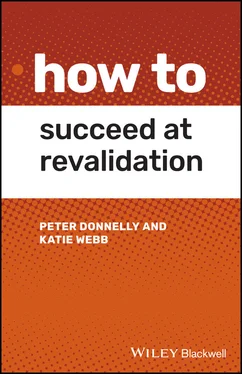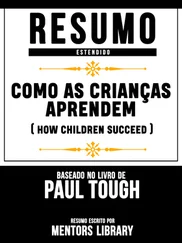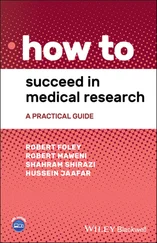Regulation can have a significant impact on innovation. On the one hand it can stimulate innovative ideas, while on the other hand serve to hinder their implementation. As a result, regulation can either stimulate improvement and/or investment, or lead to a tick‐box approach to regulatory compliance.
There are a number of subtypes of regulation:
Arbitrary regulations – rules that mandate the use of one of several equally valid options (e.g. driving on the right‐ or left‐hand side of the road)
Good faith regulations – that aim to define a baseline of acceptable practice (e.g. food hygiene regulations for the hospitality industry)
Goal conflict regulations – regulations that recognize a conflict between two parties and mandate for the greater good. These are typically conflicts between the individual versus wider society
Process regulations – these determine how a task should be accomplished.
In addition, it is important to understand the characteristics of the regulator. In peer‐regulation the community regulates itself, a form of self‐regulation. Unilateral or flat regulation is when regulations are imposed by the body with the power to do so. Statutory regulation is where the authority to define the rules is delegated to an independent third party body. This is the current position with health regulation in the UK whereby the Government delegates power to regulatory bodies such as the General Medical Council (GMC) or the General Dental Council (GDC).
In general, any forward‐thinking society would wish for regulation that supports and stimulates innovation, which in turn benefits citizens and the economy. In addition, optimal regulation is one that protects members of the public but does not hinder innovation and/or have unintended negative consequences. Across all sectors there is a need for regulators to evolve to keep pace with the rapid changes in society, and with the need to maintain the balance of safety and security versus innovation that improves the lives of its citizens.
Regulation in Health Professions
Professionalism and Society
In early history, occupations began to evolve and move into what would now be considered a profession. The key milestones marking this transition from simple activity to a profession include full‐time occupation, establishment of training schools or universities, codes of ethics and regulation, licensing legislation and colleague control. Another key component in this transition to a profession was the balance between a level of autonomy of work and the regulatory requirements. Larson added to the characteristics above with the addition of high standards of professional and intellectual excellence, as well as referring to professions as “exclusive elite groups” (Larson 1978, p. 20).
The three original occupations of law, the clergy and medicine arose through the medieval universities of Europe. By the turn of the nineteenth century, with occupation specialization, different bodies claimed and achieved professional status including nursing and teaching.
The concept of medical professionalism probably dates back to the late medieval times when doctors organized a professional guild (Sox 2002). At that point medical professionalism was viewed as the art of practicing medicine to a certain set of standards that were set by the profession itself, essentially self‐regulation. This has evolved and responded to societal and political changes. The professions addressed a range of societal issues and in return society afforded these professions a number of privileges, including monopoly status, the authority to decide who could enter the profession and the ability to influence government policy.
In essence there was an implied social contract (Cruess et al. 2010) where there was an acceptance of the balance between altruism and self‐regulation. Although early definitions of the medical profession have been doctor‐centered, there has been a shift recognized by regulatory bodies toward a position of medical professionalism as being a social construct, a social contract between doctors and society (Cruess and Cruess 2008).
The social contract is now recognized as a tripartite agreement involving three interconnected societal elements:
1 The government, employers, and health care managers
2 Patients, patient groups and the general population
3 The medical profession and its professional bodies.
Each of these groups has its own responsibilities and roles in fulfilling its side of the contract. There is recognition from certain sections of the medical profession that the social contract is a dynamic entity that is ever‐changing in the context of rising systematic pressures and societal expectations. There are many factors that impact upon the contract, including the regulators, social media, print and broadcast media, and professional organizations (Cruess and Cruess 2011).
Recognizing the evolving position, in 2015 Jeremy Hunt, the then Health Secretary, called for a new social contract between the public, health and care services. In a speech to the Local Government Association (LGA) annual conference in Harrogate, Mr. Hunt urged the public to take more personal responsibility:
for looking after the elderly
for their own health
in using finite NHS resources.
He argued that, while integration of health and social care is vital to delivering the highest standards of health and care, personal responsibility needs to sit alongside system accountability (Hunt 2015).
There is a further element to the evolution of health roles. It has been argued that there has been a significant blurring between the roles of health professions. There are arguments for and against this development. Although roles have evolved and are constantly changing, there is a current strategic position in the UK from governments and the relevant statutory education and training bodies to actively upskill non‐medical professions and develop new roles such as the Physician Associate (PA). There are possible risks with this strategy, and some argue that these developments have been accelerated to reduce costs and that there is a risk the system now expects some professions to work beyond their competency ceiling (Oxtoby 2009).
While we will explore self‐regulation in relation to medicine in greater detail later in the chapter, the concept of self‐regulation has been defined as a contract between the profession and the public (represented by the State). As a part of the contract, the profession promises that all members of the public will be served by good doctors and protected from bad ones. In turn the public, via the State, gives the profession a high level of autonomy over its own affairs. There are arguments for and against self‐regulation. The first in favor of self‐regulation is that medicine is so complex that doctors themselves are best placed to define standards that differentiate between good and unacceptable practice. The second argument is that if doctors as a body have a sense of ownership of these standards, then they are more likely to adhere to them. The argument goes that such a model of self‐regulation, if balanced with processes to ensure the public has a loud voice, is the best to achieve the desired outcome – a safer service for patients.
Professional regulation has two key elements. The first is at the level of the individual doctor. This requires individual doctors to exercise self‐discipline. This requirement is of paramount importance considering the clinical scenarios facing most doctors on a daily basis where they have to make decisions, with patients, based on less than optimal evidence (Bate et al. 2012).
The second element lies at the collective level where the profession as a whole is required to ensure that current practice, in general, is in line with the accepted standards in operation at that time. These standards are by their nature changing frequently. For example, the legal framework underpinning the process of obtaining consent in the UK changed significantly after the Montgomery case in 2015 (Chan et al. 2017).
Читать дальше




![Коринн МакКей - How to Succeed as a Freelance Translator [calibre 3.46.0]](/books/402693/korinn-makkej-how-to-succeed-as-a-freelance-transl-thumb.webp)







